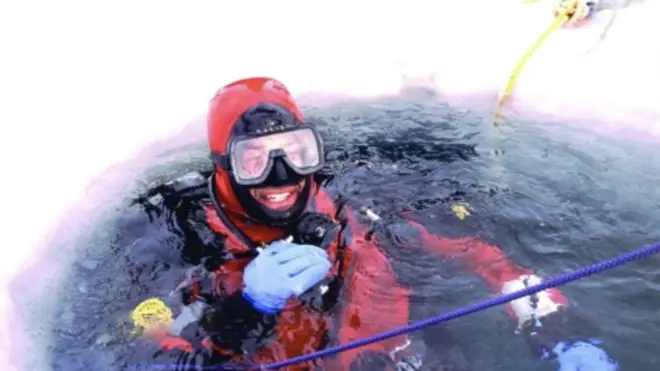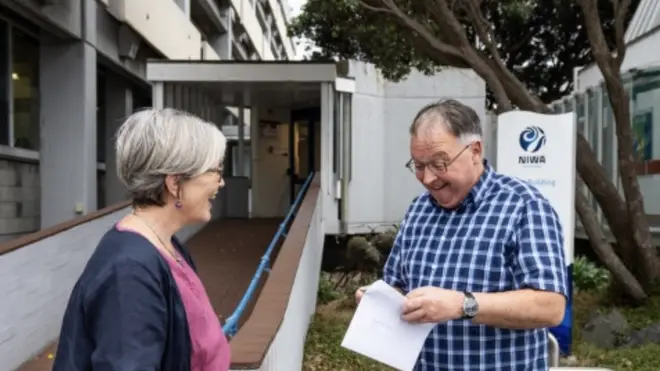
James Hanson 4am - 7am
24 April 2024, 13:18 | Updated: 24 April 2024, 18:30

A senior music producer has been reunited with his ID card 21 years after losing it - with it having clocked thousands of kilometres during its mysterious disappearance.
David McCaw said he was "flabbergasted" by the "bizarre" find after years of unanswered questions.
In 2003, Mr McCaw had his briefcase stolen after his car was broken into. He lost all of the contents - including the ID card.
But 13 years later, it was discovered under an iceberg in Antarctica by National Institute of Water and Atmospheric research (NIWA) technician Rod Budd.
The card managed to make its way from Wellington Harbour to Cape Evans, some 4,000km, which would take thousands of years to be carried on its own by ocean currents.

“David wasn’t on the expedition with us, so I presumed he’d been down in Antarctica that season and dropped the card at some point," Mr Budd told NIWA.
"I made a mental note to return it to him once I got back to New Zealand.
"Years later, after several failed attempts to source an email or phone number for David, I told the NIWA comms team about it because I thought it’d made an interesting internal story. Well, I didn’t expect what was coming next."
Communications Manager Sarah Fraser was able to track down Mr McCaw's email through her contacts and got in touch with him.
"I’m absolutely staggered to see that access card again!" he said.
"I’m not sure I can give you a plausible explanation right now… in 2003, my car was broken in to and my work briefcase stolen while it was parked over the road from the Michael Fowler Centre.
"The contents of the briefcase were discarded including the security access card I kept in the bag.
"A few days later the briefcase was handed in to Wellington Police Station, apparently retrieved by someone from Wellington Harbour. I collected the briefcase, mostly empty, except for a quantity of seawater and some soggy documents!"

NIWA’s Dr Craig Stevens said it is unlikely that the card would have reached Antarctica on its own.
"I find it difficult to imagine how it could have got there of its own accord AND turn up in one of the few locations around Antarctica where people regularly go," he said.
"There is nothing in the ocean currents that plots a direct line from Wellington to Cape Evans.
"A scenario where it could happen involves the card leaving Wellington Harbour, entering the Western Boundary Current towards the North Pacific, moving past Samoa.
"If the card then (somehow) became more buoyant, it would work its way to the surface by wind mixing and other processes, go through Indonesia, cross the Antarctic Circumpolar Current – the world’s largest – and land in Cape Evans.
"But this would take 1,000 years."